SUSAN ELIA MACNEAL: Today I'm delighted to introduce debut historical mystery writer Karen Odden. She's the author of A LADY IN THE SMOKE: A VICTORIAN MYSTERY:
Following a humiliating fourth Season in London, Lady Elizabeth Fraser is on her way back to her ancestral country estate when her train careens off the rails and bursts into flames. Though she is injured, she manages to drag herself and her unconscious mother out of the wreckage, and amid the chaos that ensues, a brilliant young railway surgeon saves her mother’s life. Elizabeth feels an immediate connection with Paul Wilcox—though society would never deem a medical man eligible for the daughter of an earl.
After Paul reveals that the train wreck was no accident, and the inspector who tried to prevent it dies under mysterious circumstances, Elizabeth undertakes a dangerous investigation of her own that leads back to her family’s buried secrets. The more she learns, the more she must risk. Not only are her dowry and her reputation at stake; Paul’s very life hangs in the balance when he is arrested for manslaughter. As the trial draws near, and Parliament prepares for a vote that will change the course of the nation, Elizabeth uncovers a conspiracy that has been years in the making. But time is running out for her to see justice done.
Today Karen's visiting Jungle Reds to talk about Victorians, railway accidents, and trauma. As someone who writes about war and PTSD (before it was even diagnosed or named that) I found this piece fascinating. Welcome, Karen!
 KAREN ODDEN: When I first began researching railways over a decade ago, my interest was actually in trauma. I’d been reading Oppenheim and Freud, whose late-1800s treatises began to describe traumatic neurosis. But as I read, I found myself thinking, OK, these guys are clever, but surely the notion of “trauma” didn’t spring into their heads out of nowhere. As I began to read histories of trauma and PTSD (a diagnosis officially accepted in 1980), I realized that to some extent, trauma began with the accounts of Victorian railway disasters.
KAREN ODDEN: When I first began researching railways over a decade ago, my interest was actually in trauma. I’d been reading Oppenheim and Freud, whose late-1800s treatises began to describe traumatic neurosis. But as I read, I found myself thinking, OK, these guys are clever, but surely the notion of “trauma” didn’t spring into their heads out of nowhere. As I began to read histories of trauma and PTSD (a diagnosis officially accepted in 1980), I realized that to some extent, trauma began with the accounts of Victorian railway disasters. One of the most famous accounts came from Charles Dickens, who survived a horrifying crash in 1865. He crawled out of his toppled railway car, dragging his mistress Ellen Ternan, her mother, and his manuscript for Our Mutual Friend behind him. He spent several hours ministering to other victims, serving them brandy from his hat. Then, he walked home. But in the days following, he had ringing in his ears; he had nightmares; and his hands shook so badly he couldn’t sign his usual flourish. By the 1860s, some medical men attributed these symptoms to “railway spine” or “concussion of the spine.” But most admitted they didn’t really understand it.
One of the most famous accounts came from Charles Dickens, who survived a horrifying crash in 1865. He crawled out of his toppled railway car, dragging his mistress Ellen Ternan, her mother, and his manuscript for Our Mutual Friend behind him. He spent several hours ministering to other victims, serving them brandy from his hat. Then, he walked home. But in the days following, he had ringing in his ears; he had nightmares; and his hands shook so badly he couldn’t sign his usual flourish. By the 1860s, some medical men attributed these symptoms to “railway spine” or “concussion of the spine.” But most admitted they didn’t really understand it. Intrigued by all this, I headed off to the London libraries to see if I could find other accounts. Little did I know. I found hundreds of newspaper articles, poems, sensation novels, parliamentary papers, cartoons, pamphlets, and medical treatises. Clearly, Victorians had a lot of anxiety about railway accidents! What I began to notice, though, was how many accounts hinted at how the experience was beyond words: “This railway disaster is simply too terrible to describe”; “the horror of it defies all description.”
Intrigued by all this, I headed off to the London libraries to see if I could find other accounts. Little did I know. I found hundreds of newspaper articles, poems, sensation novels, parliamentary papers, cartoons, pamphlets, and medical treatises. Clearly, Victorians had a lot of anxiety about railway accidents! What I began to notice, though, was how many accounts hinted at how the experience was beyond words: “This railway disaster is simply too terrible to describe”; “the horror of it defies all description.”  On the other hand, there were often strange overlaps or excesses in the accounts. For example, this illustration from a medical textbook is of a spine, but it’s drawn in a way that suggests a railway track too; thus, one illustration suggests both the cause of the injury and the injury itself. With a jolt, I realized that these failures of language and excesses of meaning were akin to the unspeakability and profusion of symptoms that we now associate with trauma and PTSD.
On the other hand, there were often strange overlaps or excesses in the accounts. For example, this illustration from a medical textbook is of a spine, but it’s drawn in a way that suggests a railway track too; thus, one illustration suggests both the cause of the injury and the injury itself. With a jolt, I realized that these failures of language and excesses of meaning were akin to the unspeakability and profusion of symptoms that we now associate with trauma and PTSD.
What began to interest me—after I recovered from the painful dissertation process—was how creative writers since the late 1800s have experimented with different literary elements to represent trauma.
 One modern example is Tender is the Night. Beginning in 1925 and drawing on his experience of his wife Zelda’s mental illness, Fitzgerald wrote this story about a psychoanalyst Dick Diver and his former patient/wife Nicole, who suffers from mental illness brought about by the (arguably) traumatizing experience of being molested by her father. Significantly, in the first version, the novel contains three sections: the troubled present; a jump to the past (when Dick treated Nicole); and a return to the present. Perhaps not surprisingly, his critics didn’t like the “novel” structure. After Fitzgerald’s death, his friend Malcolm Cowley revised it so the story became chronological. But I think part of the power and discomfort that the original novel generates comes from the ruptures.
One modern example is Tender is the Night. Beginning in 1925 and drawing on his experience of his wife Zelda’s mental illness, Fitzgerald wrote this story about a psychoanalyst Dick Diver and his former patient/wife Nicole, who suffers from mental illness brought about by the (arguably) traumatizing experience of being molested by her father. Significantly, in the first version, the novel contains three sections: the troubled present; a jump to the past (when Dick treated Nicole); and a return to the present. Perhaps not surprisingly, his critics didn’t like the “novel” structure. After Fitzgerald’s death, his friend Malcolm Cowley revised it so the story became chronological. But I think part of the power and discomfort that the original novel generates comes from the ruptures.  Jump forward to after WWII, when the symptoms of “shell shock” (a post-WWI diagnosis) were well known. One of my favorite J.D. Salinger’s stories, “For Esme—with Love and Squalor” (1948) concerns a WWII soldier who meets a precocious young girl in an English tearoom before he leaves for the front. He survives five campaigns, but afterward he suffers from nervous tics; he can’t sleep or eat; he smokes incessantly; he has chewed his nails down until they bleed. Halfway through the story, there is a gap of white space, followed by:
Jump forward to after WWII, when the symptoms of “shell shock” (a post-WWI diagnosis) were well known. One of my favorite J.D. Salinger’s stories, “For Esme—with Love and Squalor” (1948) concerns a WWII soldier who meets a precocious young girl in an English tearoom before he leaves for the front. He survives five campaigns, but afterward he suffers from nervous tics; he can’t sleep or eat; he smokes incessantly; he has chewed his nails down until they bleed. Halfway through the story, there is a gap of white space, followed by:
This is the squalid … part of the story. I’m still around, but from here on … I’ve disguised myself so cunningly that even the cleverest reader will fail to recognize me.
It was about ten-thirty at night in Gaufurt, Bavaria, several weeks after V-E Day. Staff Sergeant X was in his room on the second floor of the civilian home in which he and nine other American soldiers had been quartered, even before the armistice.
The shift from first-person to third-person, the white space, and the meta-comment about the “disguise” suggest that by this point, conventions existed for representing the trauma of war, and people could begin to acknowledge war’s effects on those who survived it.
 Now for the twenty-first century. I just read Alison Bechdel’s graphic novel “Fun Home,” which demands a constant, even jarring switch back and forth between words and pictures. As I read, I felt in some way that the constant switching made me feel the unease of shuffling between two realities: the pain of knowing a frightening truth about a father and the desire not to know it.
Now for the twenty-first century. I just read Alison Bechdel’s graphic novel “Fun Home,” which demands a constant, even jarring switch back and forth between words and pictures. As I read, I felt in some way that the constant switching made me feel the unease of shuffling between two realities: the pain of knowing a frightening truth about a father and the desire not to know it.
What I love about literature is that it evolves. Maybe, as Christopher Booker once wrote, there are really only seven plots; I don’t know. But the ways stories are told changes over time. The flashback that breaks Tender is the Night doesn’t seem so “novel” any more. We’ve all seen the wry type of “meta” that Salinger uses in “Esme.” But what keeps literature vital is that writers are continually experimenting with form and structure and language, daring to stretch the bounds for representing human experience.
 Karen Odden's interest in the Victorian era and specifically railway crashes goes back to her New York University doctoral dissertation, which explored how the medical, parliamentary, and literary representations of railway disasters helped to create a discourse out of which Freud and others fashioned their ideas of “trauma.”
Karen Odden's interest in the Victorian era and specifically railway crashes goes back to her New York University doctoral dissertation, which explored how the medical, parliamentary, and literary representations of railway disasters helped to create a discourse out of which Freud and others fashioned their ideas of “trauma.”Karen has served as an Associate Lecturer at the University of Wisconsin-Milwaukee and taught classes in English language and literature at New York University and the University of Michigan-Ann Arbor. She has contributed essays and chapters to books and journals, including Studies in the Novel, Journal of Victorian Culture, and Victorian Crime, Madness, and Sensation; and she has written introductions for Barnes and Noble’s Classics Series editions of books by Dickens and Trollope. Prior to receiving her Ph.D. in English, she worked as an Editorial Assistant at Harcourt Brace Jovanovich and McGraw-Hill, as a Media Buyer for Christie’s Auction House in New York, and as a bartender at the airport in Rochester, where she learned how to stop being shy. She is a member of SCBWI and Mystery Writers of America; and she currently serves as an Assistant Editor for the academic journal, Victorian Literature and Culture (Cambridge UP).
Karen currently resides in Scottsdale, Arizona with her husband, her two children, and her ridiculously cute beagle, Rosy.





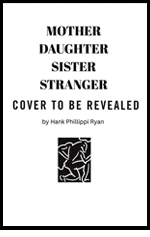
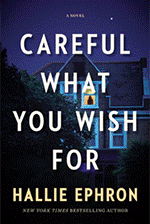
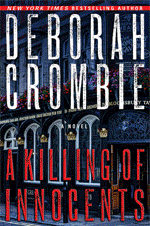
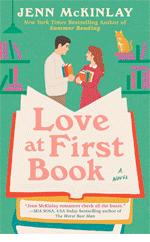


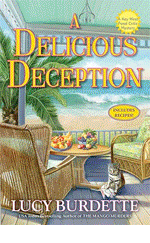
Karen, congratulations on your debut novel, which will be added to the teetering death trap known as my TBR pile.
ReplyDeleteFascinating to read about your research and discovery--even your dissertation sounds interesting! ;-)
My favorite traumatized protagonists--Ian Rutledge and William Monk. My favorite unchanged protagonists--Miss Marple and Brother Cadfael.
Congratulations, Karen - fascinating to read about your research. I do think most protagonists in modern mystery novels are at least affected by what happens. The protagonist has to care. Teflon protagonists feel dated. My favorite traumatized protagonist is Lisbeth Salander, the girl with the dragon tattoo... though you could argue whether she's actually the protagonist of those books.
ReplyDeleteWow Karen, what a terrific post! I just finished reading THE LAKE HOUSE by Kate Morton (and thanks to Rhys for recommending that). PTSD from the first World War is one of the main themes and drives the plot. It's an enormous book--500 pages--so a big commitment, but I sure enjoyed it. (There's also a mystery writer as one of the characters, so it's fun to read about her.)
ReplyDeleteAs for traumatized protagonists, I've always loved Michael Connolly's Harry Bosch, who was marked forever by finding his murdered mother (I think he was 10 or so.)
Good luck with this book--it sounds like a winner!
This is fascinating stuff, Karen. As above, we really can't talk about representations of trauma in crime fiction without including Ian Rutledge. Outside of "our" genre, I would also include Sethe from Toni Morrison's masterpiece, BELOVED, as a prime example of the effects of trauma on the mind.
ReplyDeleteAnd I love how the depictions continue to evolve. Fun Home, as now adapted to a Broadway musical, presents that story (and the tramua) in a whole new way that resonates with the viewer in ways that that graphic novel could not. I assume that movies are trying to do the same, but rarely can match the power of the written word. But there is something about the combination of words and music that makes it work.
Off to add this novel to TBR list.
Karen, not only do I want to read A LADY IN THE SMOKE, I'd also love to take a lit class from you! The mystery novelists I know put a lot more thought into their work than most readers suspect; it's nice to get written confirmation of this.
ReplyDeleteMy own protagonist, Clare Fergusson, continues to suffer PTSD after several violent experiences topped by an 18 month tour of duty in Iraq. It definitely wasn't where I planned for her to go when I began the series, but I couldn't imagine anyone going through what she has and not having PTSD.
Speaking of trauma, I'm curious about your medical protagonist. Did the rail lines have their own surgeons on staff? How did that work? And was there still a social separation between surgeons and physicians in the later 1800s?
I've written a story with a homicide detective who has PTSD. During the research, I was amazed (and not) by the breadth of possible "symptoms." It should not be surprising though because we all deal with trauma in very personalized ways (although there are broad categories) and our brains are so individual, no wonder we process it in different ways.
ReplyDeleteWalt Longmire is another traumatized character. In fact, I think I read something where either the author or the actor said, "The death of his wife is the central fact of Walt's life and he will never get over that."
Unaffected protagonist? Poirot of course. And I have an affection for Br. Cadfael.
This is completely fascinating, Karen. I'd adore to take your classes!
ReplyDeleteRemember the--was it Joseph Wambaugh? --quote, about it's not how the detective works on the case, it's how the case works on the the detective?
It's clear it's how the PAST works on the detective, too.
And this is the perfect place to name Inspector Rutledge, Charles and Caroline Todd's "haunted" detective who is "accompanied" by the young soldier he had ordered to his certain death.
And, as always, Morse.
Hank, I'm sticking this where you will find it. I received your book yesterday only to have it snatched from my hands by my partner, Julie. Will most likely suffer PTSD from this! Thanks so much. I will read it when she gives it back and will treasure it forever. I haven't won anything since the Kansas State Fair, circa 1960, a Revereware pot. P.S. Loved the inscription.
DeleteSusan,
ReplyDeleteGreat post! Off the top of my head, Jacqueline Winspear's Maisie Dobbs is someone who had PTSD as a result of her experiences as a nurse during the First World War. In one of the books, she had a breakdown. I can read all of the MD novels again and again. One of my favorites.
My favorite character, who seems eternally trauma free is Hercule Poirot. His creator, Agatha Christie, was inspired by seeing Belgian refugees to England during the first world war. The HP character was a WWI refugee from Belgium.
Karen, your new book sounds fantastic! I want to read A Lady in the Smoke: A Victorian Mystery, Are you going to Malice Domestic conference next year? Congratulations on your debut novel.
Julia, great questions! I had similar questions. Thank you for asking :-)
Mary Sutton, I remember the Longmire tv series on DVD.
Diana
Ian Rutledge, of course, and Maisie Dobbs. But before either was Dorothy Sayer's Lord Peter Wimsey, who suffered all the symptoms of what we now call PTSD from his experiences in the War.
ReplyDeleteI'm not sure that Poirot was all that trauma free. I always thought many of his personality quirks were his way of repressing his experiences as a refugee. Miss Marple might be a better example. And how about Sherlock himself??
Karen, so looking forward to your book!
A LADY IN THE SMOKE is a marvelous read.
ReplyDeleteI highly recommend it.
This is a fascinating discussion. Thanks for sharing with us.
Congratulations on the book, Karen!
ReplyDeleteAgatha Christie’s delightful Miss Marple springs to mind for the perpetually trauma-free character.
As for characters who’ve changed due to trauma, there's David Baldacci’s Amos Decker and Michael Connelly’s Harry Bosch. But my first thought is my all-time favorite, Reverend Clare Fergusson in Julia’s wonderful series.
Hey wait! I posted but it never showed up!
ReplyDeleteANYWAY, I was thinking Shelock Holmes for the Teflon sort of protagonist and Harry Bosch and Lisbeth Salander as those suffering from PTSD. I had Maggie go through a bit of a breakdown in one book, just because she'd been through so much, I couldn't imagine how anyone couldn't....
Karen, congratulations on your debut book! I have just added it to my Kindle and am looking forward to reading it. Trains have always fascinated me as settings for stories or playing a role in a story, and your research on trauma and train wrecks sounds so important and revelatory. Like Hank, I'd love to take your classes. The brief discussions of the books in your post had me wanting more.
ReplyDeleteFor a character experiencing trauma, I first thought of Julia's Clare Fergusson and the effects of PTSD after returning from Iraq. The pill addiction and trouble adjusting was an amazing part of Clare's story. And, then I thought of Maggie Hope and her trauma she had to deal with, too. Both of these stories were told with great care and compassion.
Characters who seem to remain pretty much trauma free? I think Miss Marple would probably be my pick.
I think the most vivid description of a rail accident was in God is an Englishman, or its sequel. No wonder people were traumatized. I'm coming up with the same list of people with PTSD: Ian Rutledge, William Monk, Maisie Dobbs. Author Jessica Scott writes with real knowledge about current day PTSD sufferers. Her book Before I Fall had me in tears and gave me some insight into some of my son's problems when he returned from Iraq. As for stress-free people I would suggest Lady Julia Grey and Veronica Speedwell, from Deanna Raybourn's books. Ladies who are damn the torpedos and full speed ahead!
ReplyDeleteI cannot wait to read your book, Karen!
Hi everyone! I can't tell you how excited I am to be here ... and to find so much interest in trauma and the wounds we heal (or not) through writing and art. So the reason I'm a bit late to the blogfest is that I spent the morning at my kids' school. My son Kyle (a bit of a ham) and his friend Alexander (so shy that he absolutely would NOT get up on stage unless Kyle came with him) did a piano duet, Gerudo Valley by Kyle Landry. (They rocked it.) But, mama pride aside, the final act of the show was by two eighth-grade boys who did a Duo Interpretation. They're both on the speech and debate team, about which I know virtually nothing. Apparently, this "genre" requires the two to portray a story in 7-10 minutes, without once looking at or touching each other. They portrayed two brothers, one with cancer. It was raw and unsentimental and tender; and by the end I was fighting back tears. And I couldn't help thinking about both my blog on trauma and the one from last week, by Ali Trotta, about "old wounds" that don't heal without work. I think that's one reason I write: pain plain old hurts more when I'm alone in it. And when I write and someone reaches back, or when I read writers who dare to be open and frank, my heart lightens a bit. I guess I'm like Kyle's friend Alexander ... I want a buddy at the piano. :) Thanks to Susan for inviting me to the blog and to all of you who have responded so warmly to what I wrote and to my book. Cheers!
ReplyDeleteAnd to answer Julia's questions--from what I have read, some railways did have their own railway surgeons on staff--but significantly, their main purpose was to defend the railway companies during the railway trials. That is, they didn't ride the railways on the off-chance that an accident would happen and their medical skills would be needed. Rather, they might appear in court to declare someone a malingerer, thereby protecting the railway's pockets.
ReplyDeleteAnd the difference between the university-trained physicians and the apprentice-trained surgeons did diminish as surgery became an acknowledged and respected study within the universities. (A B.A. was still considered the best background for entering the medical field, for a long time, which had to do with class and status.) M. Jeanne Peterson wrote what I think is the best book on the subject, The Medical Profession in Mid-Victorian London ... if you're interested further :)
This is fascinating, Karen! I think what was most surprising to me as I read the blog was that illustration of the spine/railroad. I mean -- wow. Talk about metaphor, right?
ReplyDeleteOf course PTSD didn't magically appear when psychiatrists first recognized it. Your research in tracking the disorder through history and literature is downright fascinating. And it made the basis of a superb novel. Great post, Karen!
ReplyDelete